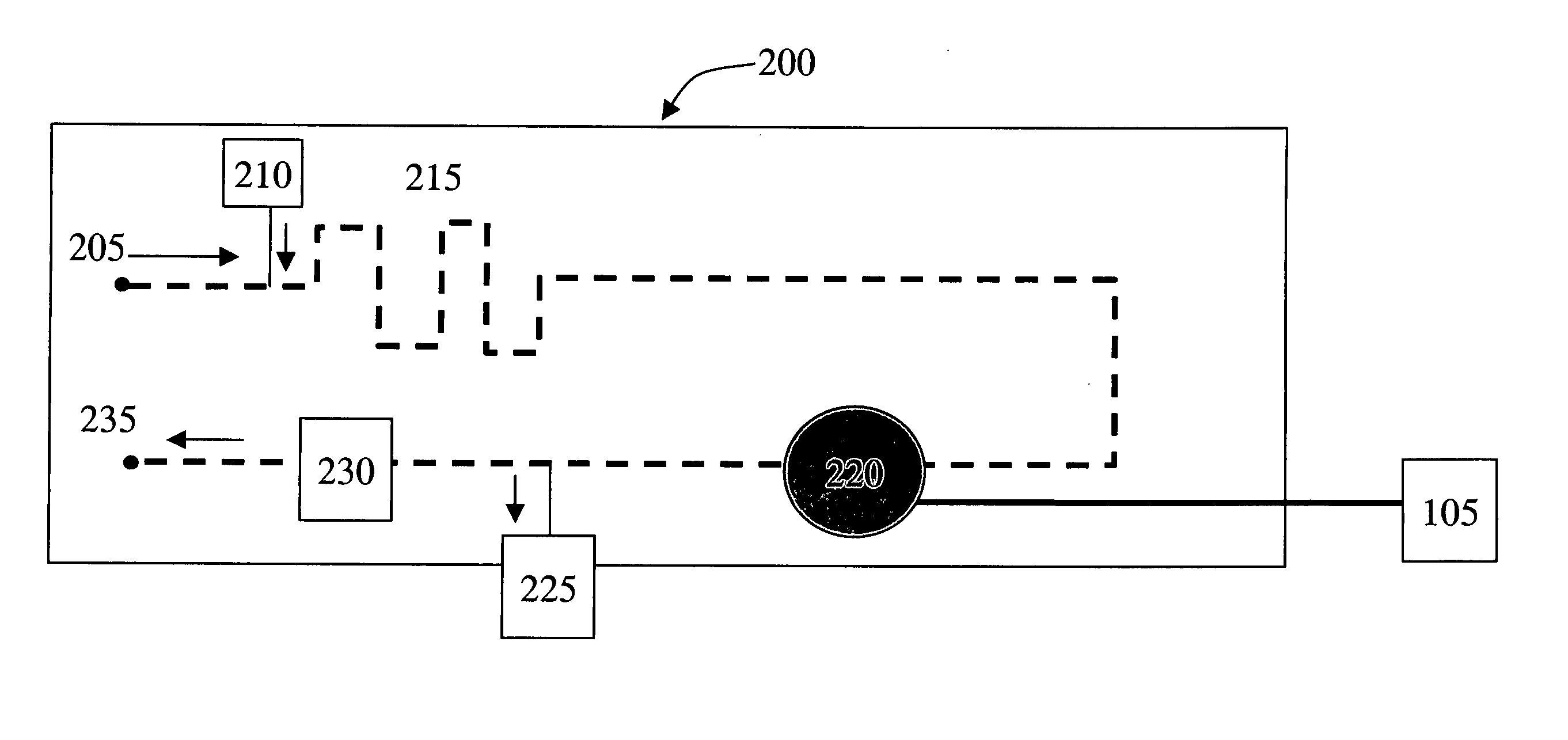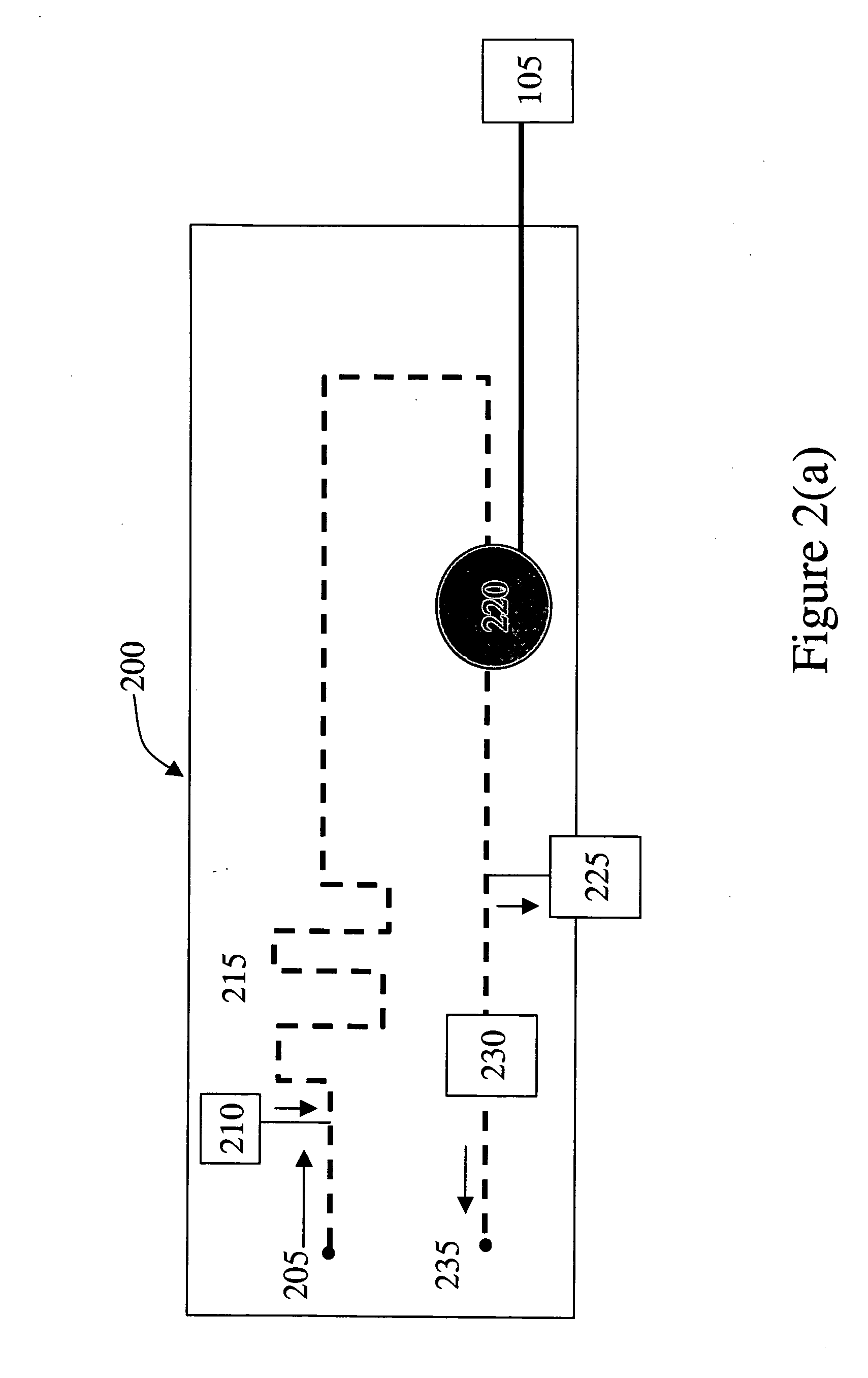Microfluidic system for chemical analysis
a microfluidic system and chemical analysis technology, applied in the field of chemical analysis systems, can solve the problems of conventional methods and apparatuses that require bulky components that are not efficiently miniaturized for downhole applications, and the loss of carbon dioxide and hydrogen sulfide can give misleading ph values
- Summary
- Abstract
- Description
- Claims
- Application Information
AI Technical Summary
Benefits of technology
Problems solved by technology
Method used
Image
Examples
Embodiment Construction
[0026]FIG. 1 is a schematic of the autonomous microfluidic system 10 of the present invention having a microfluidic substrate 200 in communication with a housing 100. Preferably, the substrate 200 is hermetically sealed to the housing 100 such that the sample inlet 205 extends outside of the housing 100 and the electrical connections 120 are within the housing 100. The housing 100 further includes a power supply 105 and control electronics 110 in electrical connection with the substrate 200. It is noted that while reservoir 210 is shown in this figure outside the housing 100 and the waste collector 225 is shown inside the housing 100, the location of these components relative to the housing will depend on the desired configuration of the system. Alternatively, the waste fluid may be discharged via outlet 235. Accordingly, the configuration ofFIG. 1 is intended to be illustrative and non-limiting. Most preferably, the housing 100 is bonded 115 directly to the substrate 200 avoiding e...
PUM
| Property | Measurement | Unit |
|---|---|---|
| pressure | aaaaa | aaaaa |
| optical | aaaaa | aaaaa |
| optical interrogation | aaaaa | aaaaa |
Abstract
Description
Claims
Application Information
 Login to View More
Login to View More - R&D
- Intellectual Property
- Life Sciences
- Materials
- Tech Scout
- Unparalleled Data Quality
- Higher Quality Content
- 60% Fewer Hallucinations
Browse by: Latest US Patents, China's latest patents, Technical Efficacy Thesaurus, Application Domain, Technology Topic, Popular Technical Reports.
© 2025 PatSnap. All rights reserved.Legal|Privacy policy|Modern Slavery Act Transparency Statement|Sitemap|About US| Contact US: help@patsnap.com



